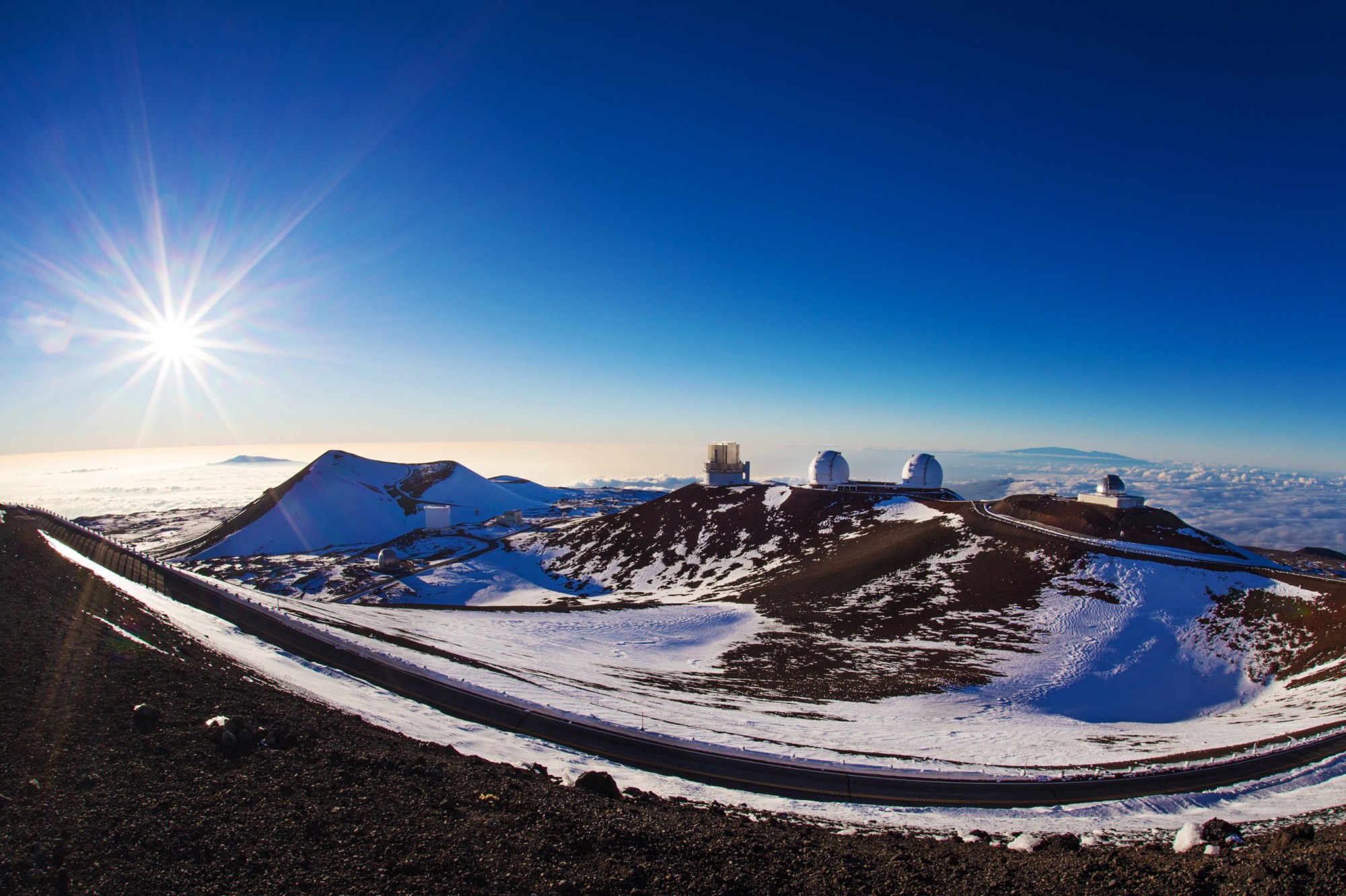The 411 On Mauna Kea

Mauna Kea has been the topic of discussion lately, everybody’s feed has been flooded with posts regarding the Thirty Meter Telescope (TMT) Protests happening around the world. Here’s a brief recap of what’s been going down on the mauna (mountain) for those of you who are new to the conversation.
The State of Hawaii wants to build a Thirty Meter Telescope atop Hawaii’s tallest mountain Mauna Kea. This telescope is designed by a union of universities and research institutes in the United States, Canada, China, India and Japan, and will use some of the world’s largest sensors and immense mirrors to see deep into the universe. The 18-story TMT is projected to provide images at 12-times the resolution of the Hubble Space Telescope. At almost 14,000 feet above sea level, and with clear air and little to no light pollution, the summit of Mauna Kea provides some of the world’s best viewing conditions of the night sky.
In response to the construction Native Hawaiians and Hawaiian activists have gathered by the thousands to protect their sacred mountain. For Native Hawaiians, the problem is less about the device, rather more about the location. Mauna Kea, is not only the state of Hawaii’s tallest point, but also considered the piko (umbilical cord), the location of origin for the Hawaiian people. Mauna Kea is where Hawaiian aliʻi (royalty) are buried, and where generations of Hawaiian people have long gathered to sing, chant, dance, pray and, ultimately, be within the presence of mauna.
Whether you are ‘aʻole or imua TMT, we think it’s important to understand Mauna Kea. Mauna Kea is unlike other mountains of the world for so many difference reasons. This month on the blog, weʻre learning more about why this precious mountain is worth so much to so many.
Mauna Kea is a one-million-year old volcano on the Island of Hawaii (Big Island). It’s peak measures at 13,803ft above sea level, and when measured from its oceanic base at 33,000ft is the tallest mountain in the world. Scientists believe Mauna Kea last erupted about 4,600 years ago which categorizes it as dormant, and is expected to erupt again. It is one of five volcanoes that make up Hawaii island, and is the fourth oldest and most active. Both Mauna Kea and Mauna Loa’s summits are classified as polar tundras, giving Hawaii island 8 out of the 13 climate zones in the world.
It’s no secret that Mauna Kea is a hot spot for scientific discovery. Of the 13 telescopes already housed on the summit of Mauna Kea, two are administered by The University of Hawaii directly, while others are either closed or internationally funded. The W.M. Keck Observatory, a telescope administered by the California Association for Research in Astronomy, has been at the cutting edge of space discovery for over twenty years. When scientists make an interesting space finding via telescope, Keck Observatory is almost always used to confirm it. Its world-renowned discoveries vary anywhere from the outer reaches of space to our very own solar system.
As far as Hawaiian mythology goes, Mauna Kea has a long list of connections to Hawaiian gods and goddesses. Mauna Kea is also known as Mauna O Wakea, or Wakea’s mountain, Wakea being sky father who joined with Papa Hanau Moku to birth all the islands and its native people. Mauna Kea, more specifically it’s summit, belongs to Poli’ahu, the goddess of snow, ice and the cold. Lilinoe, the goddess of fine mist, also resides on the mauna. It is believed that she dresses Poliahu’s hair, as to keep it soft and fine, while floating about her like a cloud. Wai’au is guardian of the only alpine lake in Hawaii. Lake Wai’au is the highest lake in the Pacific Basin and sits 13,022ft above sea level. While Hawaiian lava types are typically permeable, which usually prevents lake formation due to infiltration, in one way or another volcanic ash was reduced to a low-permeability clay that eventually formed into a lake bed. Mauna Kea also has connections to Kahoupokane, Lea, Elepai’o, La’amaomao, and Kukahau’ula.
Of the five volcanoes that make up the Big Island, Mauna Kea is the highest and most sacred. For this reason in ancient Hawaii, visitors to the summit were restricted to the highest-ranking aliʻi. In ancient times sources of nutrition and livelihood were graciously provided by the mauna to the people, and because of this, Native Hawaiian have survived to present day.
We know there’s a lot more to the TMT disagreement than we understand. However, we are also aware of the great significance one mountain can have over an entire nation. No matter of which way youʻre leaning in support, we urge to stay in the know. Be involved, and voice your opinion.
Another thing we’re sure of is our love for Oʻahu! Need help exploring more of this beautiful island weʻre blessed to call home? Count on us to show you the way. Browse and book some of the tours we offer and give us a call if you have any questions about them. Aloha!
